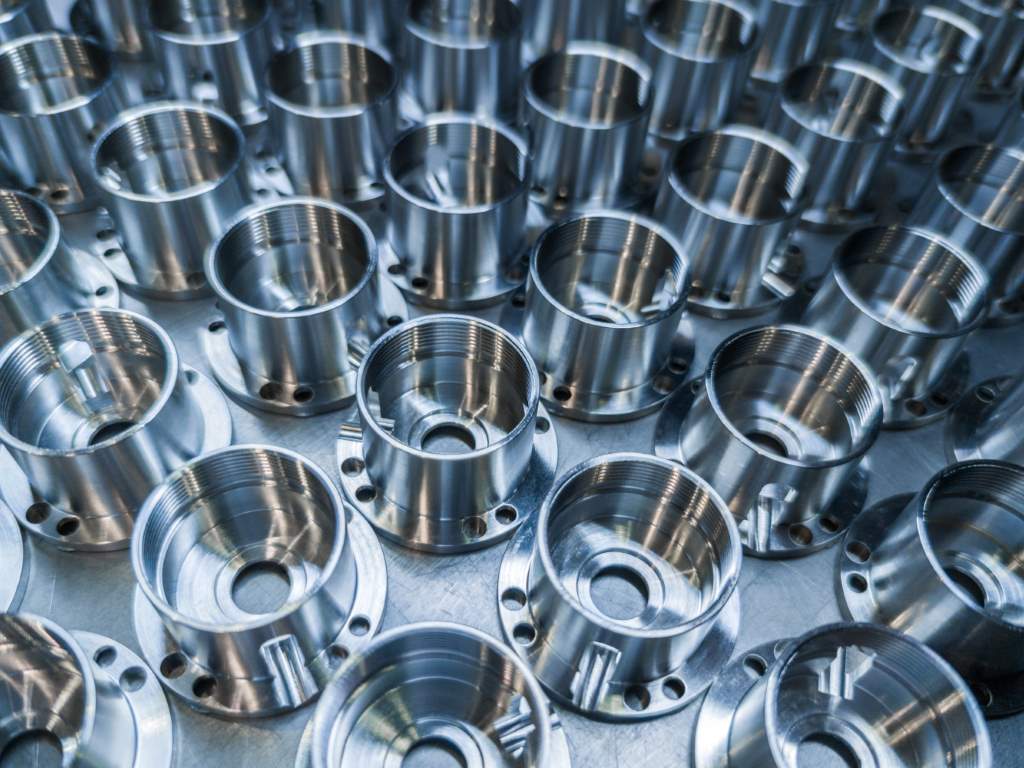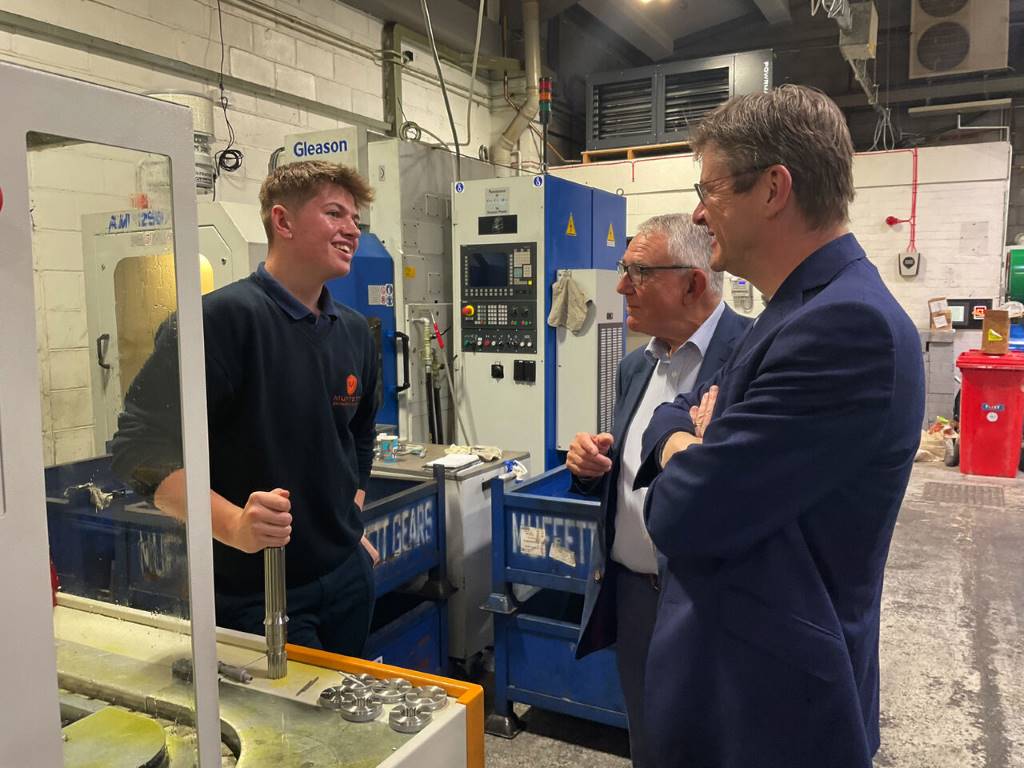Can we build it? Yes we can
Developments in the energy sector are racing ahead. Taylor-Jayne Fox and Simon Taylor from the Manufacturing Advisory Service (MAS) talk to Solutions about opportunities in the nuclear and renewables supply chains.
The energy sector is burgeoning in the UK. Indicative timelines for the first five new nuclear plants are now in place, new technologies are being developed on a seemingly daily basis and developments in renewables – from wind to tidal - are progressing rapidly.
As a result, manufacturers across the UK are, and rightly so, looking at how best to capitalise on associated opportunities. This article looks at how companies are successfully diversifying into new markets and provides guidance on what companies need to consider from standardising production and market research to networking.
The nuclear supply chain: Taylor-Jayne Fox, nuclear lead and process improvement practitioner at MAS North West.
The groundwork for new nuclear build is upon us, with initial civil work due to begin as early as next year. This will be quickly followed by the first nuclear concrete being laid in 2013, which should literally pave the way towards us hitting the 2018 deadline for the first new reactor to come on line.
At the moment there are currently three consortia that have declared their interest in developing new build nuclear power plants in the UK: Nuclear New Build Generation Company or NNB Genco (EDF and Centrica), Horizon Nuclear Power (a joint venture between E.ON and RWE) and NuGeneration (GDF SUEZ, Iberdrola and Scottish and Southern Energy SSE).
Of these three NNB Genco is the most advanced. Having selected AREVA as its design partner a UK supplier forum was held in June 2009. In addition AREVA has also teamed up with Rolls-Royce and Balfour Beatty to further support UK supply in facilities development.
What may be surprising to some is that many of the contracts aren't core to the reactor, which means they don't necessitate knowledge of nuclear codes such as RCC-M or ASME. As a result a lot of the expertise for these non-core areas or the ‘balance of plant,' could potentially be provided by UK companies who may not have identified the opportunities open to them.
The primary key to tapping into these opportunities within the civil nuclear market is to be proactive in your approach. This means understanding the marketplace requirements and the different sectors within it, knowing where your business and product best sits in this somewhat complex industry and setting a plan of action by which to qualify and compete effectively. To enable British firms to do this the Government has set-up a support programme for manufacturers looking to enter the nuclear supply chain.
The MAS nuclear programme supports third and fourth tier suppliers entering the nuclear supply chain and brings together the Nuclear Industry Association (NIA), utility companies, reactor designers and other original equipment manufacturers. One of its main benefits is in helping potential suppliers fully understand – and adhere to – delivery and quality processes so that they can be considered for inclusion in the supply chain.
The Nuclear Industry Association (NIA) has also launched its own programme for accessing the supply chain, and its website is a central point for information on the consortiums and tendering processes, as well as up to date information on all developments. In addition, the Nuclear Advanced Manufacturing Research Centre (NAMRC) is also working closely with the NIA and MAS to assist companies to reach and exceed the standards needed for new nuclear builds, so there is a great deal of support for manufacturers.
The opportunities are also not restricted to new build. The Government has committed to a £12 billion programme to support the decommissioning of existing sites. The fund is being administered by the Nuclear Decommissioning Authority (NDA). A positive aspect of this market and one which works to the strengths of UK engineering is the consistent search for innovative engineering solutions required to save costs and reduce down the lifetime plan of projects.
The renewables sector: Simon Taylor, renewables advisor at MAS North East The low carbon and environmental goods and services (LCEGS) market, including renewables, increased to £3.2 trillion globally in 2008/09 and is projected to grow 4% per annum over the next five years.
This provides a fantastic opportunity for UK firms especially in light of a recent survey by MAS which identified that 70% of companies in the UK believe they already manufacture products that could potentially be supplied to the low carbon marketplace.
While the opportunities in the renewables sectors are vast, they are also hugely diverse – a mixture of both maturing and niche markets each of which present their own challenges and opportunities. Understandably this can make the sector a daunting prospect, especially for small to medium firms.
Wind is an example of a maturing market that can provide some interesting learning points for the next wave of renewables suppliers. Having reached an installed capacity of 5GW in the UK last year, significant private investment has been announced in the form of three new turbine manufacturing plants from Siemens, GE and Gamesa.
Small and medium sized manufacturers that have benefitted from wind are those that have seen the opportunity early and diversified their product range accordingly. A good example of this is Lincolnshire-based BGB Innovation who having manufactured carbon brush holders for almost 30 years began developing solutions for consistent electrical connections between the rotating and static components of wind turbines in the early 1990s. Similar growth is likely with the new and emerging technologies of wave, tidal, biomass and solar, and if UK companies are able to adapt to the requirements of clients they will in turn grow with the market.
Wave and tidal are just emerging commercially, the first tidal device has been in place in the Irish sea since 2008 and another development off the coast of Scotland has recently got the go ahead at a cost of £40 million over three years. In addition there are a number of research organisations looking to develop the technology across the UK. Indeed the European Marine Energy Centre is located in Orkney where devices can be tested and developed.
Solar photovoltaic is perhaps the technology that is closest to wind in terms of maturity. There are a number of far eastern companies involved in the mass manufacture and large scale developments, with areas of Africa and the Middle East being targeted for installation. In the UK and Europe the market is currently dominated by small scale domestic developments and has been accelerated significantly over the past year by subsidised feed in tariffs. The Government will be announcing the results of its review on feed in tariffs in June.
Biomass is increasingly being seen as a heating solution for manufacturers where naturally occurring waste can be turned into a fuel source to offset rising energy costs and reduce waste disposal costs whilst also reducing CO2 emissions. In addition the Government has recently announced the introduction of the Renewable Heat Incentive (RHI), which will further drive the development of biomass and combined heat and power units among other technologies.
With such a fast moving market the emphasis has to be on extensive research and networking. A good starting point is the renewable energy trade associations, many of whom organise regular educational and networking events.
Manufacturing Advisory Service
www.mas.bis.gov.uk NIA
www.nuclearsupplychain.com











